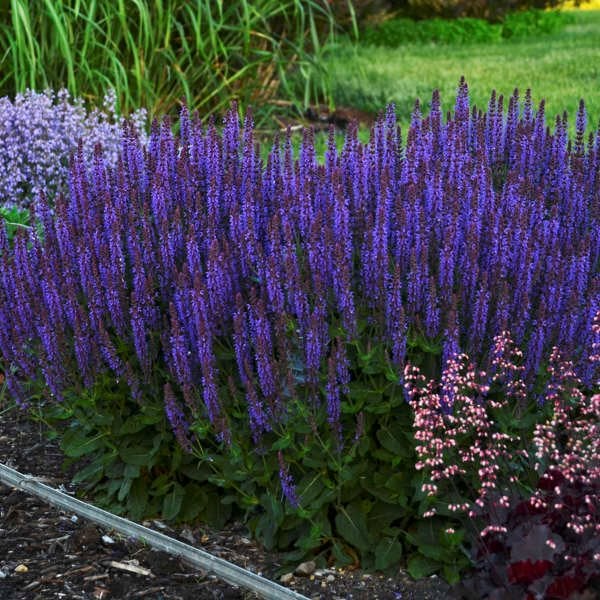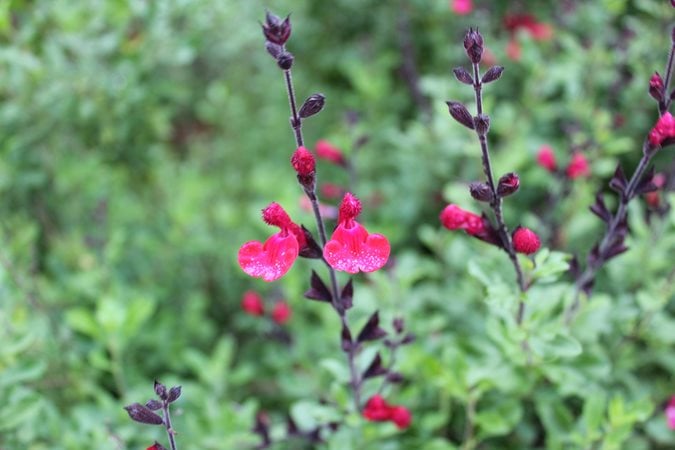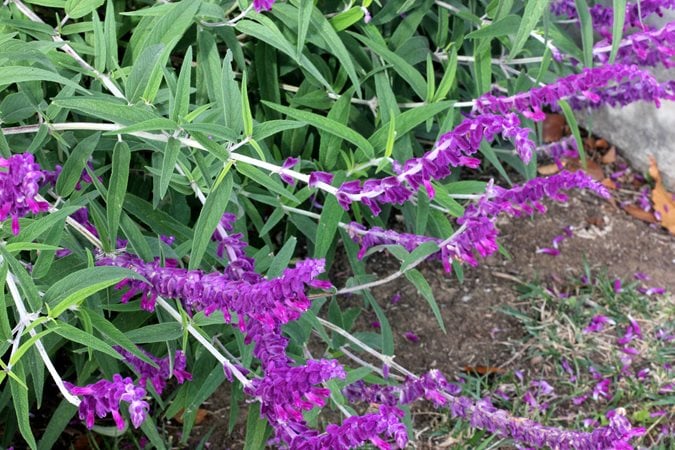Welcome to our comprehensive exploration of the decorative sage plant! As a gardening enthusiast, I have had a love affair with plants for years, and sage is one of my top favorites. Not only is it beautiful, but it’s also packed with benefits, making it a must-have for your garden or home decor. In this article, we’ll dive deep into everything you need to know about decorative sage, from its varieties and care requirements to uses in home decor and cooking. Let’s get started!
What is Decorative Sage?
Decorative sage, primarily Salvia species, includes a variety of herbs and flowering plants known for their aromatic leaves and striking blooms. While many associate sage primarily with culinary use, its ornamental varieties are a fantastic addition to any garden or indoor space.
Types of Decorative Sage
There are several popular species of decorative sage, each with unique characteristics. Here are a few of the most loved varieties:
- Salvia officinalis: Commonly known as culinary sage, it’s favored for its rich flavor and medicinal properties.
- Salvia nemorosa: Known as woodland sage, this variety produces beautiful spikes of purple flowers.
- Salvia splendens: Often called scarlet sage, it’s commonly used in gardens for its vibrant red blooms.
- Salvia guaranitica: Also known as Anise-scented sage, it has beautiful blue flowers and aromatic leaves.
Why Choose Decorative Sage?
Here are some reasons why the decorative sage plant deserves a spot in your garden or home:

Visual Appeal
The lush foliage and colorful blooms of sage plants add a pop of color and texture to any space, making them perfect for borders, containers, and flower beds.
Aromatic Qualities
The fragrant leaves of the sage plant release a pleasant aroma that can elevate the ambiance of your home or garden.

Medicinal Benefits
Sage has been used for centuries for its medicinal properties, including anti-inflammatory and antioxidant effects. It’s even used in aromatherapy!
Culinary Uses
While decorative sage is primarily chosen for its looks, many varieties also offer culinary versatility, making it easy to use in various dishes.

How to Cultivate Decorative Sage
Cultivating sage is relatively easy, making it an excellent choice for both novice and experienced gardeners. Here’s a detailed guide on how to grow it successfully.
Choosing the Right Location
Most sage varieties thrive in full sun, so select a spot that receives at least 6 to 8 hours of direct sunlight each day. Good air circulation is also crucial to prevent diseases.

Soil Requirements
Sage prefers well-draining soil with a pH between 6.0 and 7.0. You can amend your soil with organic compost to enhance its nutrient content.
Soil Comparison Table
| Soil Type | Drainage | pH Level | Nutrient Content |
|---|---|---|---|
| Clay | Poor | 6.0-7.0 | Low to moderate |
| Sandy | Excellent | 6.0-7.0 | Low |
| Silty | Good | 6.0-7.0 | Moderate |
| Loamy | Excellent | 6.0-7.0 | High |

Watering Guidelines
Regular watering is essential during the initial stages of growth. Once established, sage is drought-tolerant and only requires minimal watering. Always allow the soil to dry out between waterings to prevent root rot.
Fertilization
In most cases, sage does not require heavy fertilization. A balanced, slow-release fertilizer applied during the spring will provide sufficient nutrients. It’s best to avoid over-fertilizing, which can lead to excessive leaf growth at the expense of flowers.

Pruning and Maintenance
To encourage bushier growth and prevent leggy plants, regular pruning is recommended. Remove dead or wilted leaves and spent flowers to encourage new growth.
Decorative Uses of Sage in the Home
Decorative sage can elevate the aesthetic of your home in numerous ways. Here are some creative ideas to inspire you!

In the Garden
Planting sage in your garden can create stunning visual displays. Pair it with other perennials, such as echinacea and rudbeckia, to create a vibrant color palette.
Indoor Planting
Sage can also be grown indoors in pots. Position them near sunny windows, and they can serve as both beautiful decor and a source of fresh herbs for cooking.
Using Sage in Floral Arrangements
The unique texture and fragrance of sage leaves make them ideal for incorporating into floral arrangements. Mix them with seasonal blooms for a fresh look.
Harvesting and Storage Tips
Knowing when and how to harvest sage can maximize its flavor and freshness. Here’s what you need to know:
When to Harvest
The best time to harvest sage is in the morning after the dew has dried but before the heat of the day sets in. This preserves the oils and flavors in the leaves.
How to Harvest
Use clean, sharp scissors to snip off individual stems or leaves. Avoid cutting more than one-third of the plant at a time to ensure healthy regrowth.
Storage Methods
To store sage, you can dry it by hanging bundles of stems upside down in a dark, dry place. Once dried, store the leaves in an airtight container out of direct sunlight. Alternatively, you can freeze sage leaves for long-term storage.
Common Issues with Decorative Sage
Like all plants, sage can encounter some challenges. Here are common issues to be aware of:
Pests
Common pests that affect sage include aphids and spider mites. Regularly inspect your plants and treat infestations promptly with insecticidal soap.
Diseases
Sage is susceptible to fungal diseases, particularly if overwatered. Ensure adequate spacing between plants for ventilation and only water the soil when necessary.
Notes on Growing Conditions
While sage is adaptable, extreme conditions can stress the plant. During particularly hot periods, provide some afternoon shade to protect the leaves from scorching.
Pros and Cons of Decorative Sage
As with any plant, there are pros and cons to consider before incorporating sage into your home or garden.
Pros
- Beautiful and aromatic foliage
- Drought-tolerant and easy to grow
- Useful in cooking and medicinal applications
- Attracts beneficial pollinators like bees
Cons
- Can be susceptible to pests and diseases
- Requires full sun, which may not be suitable for all gardens
- May lose flavor if not harvested properly
Frequently Asked Questions (FAQs)
1. Can I grow decorative sage indoors?
Absolutely! Decorative sage can thrive indoors as long as it receives sufficient sunlight. A south-facing window is ideal for this plant.
2. How often should I water my sage plant?
During the growing season, water your sage plant when the top inch of soil feels dry. Once established, sage requires less frequent watering.
3. What are the best companion plants for sage?
Sage pairs well with other herbs like rosemary, thyme, and lavender, as well as flowering plants like echinacea and marigolds.
4. Is decorative sage safe for pets?
Generally, sage is considered safe for pets. However, always monitor your pets around any plants, as some animals may have sensitivities.
5. When is the best time to prune sage?
The best time to prune sage is in early spring or after flowering to encourage healthy growth and shape.
Conclusion
In summary, decorative sage is a versatile and attractive plant that can enhance your garden and home. Its myriad benefits, from culinary uses to its aromatic qualities, make it a beloved favorite for many plant lovers. Whether you’re a seasoned gardener or a newbie, sage is a fantastic choice to add to your collection. I hope this guide has provided you with the information you need to successfully grow and enjoy decorative sage. Happy planting!